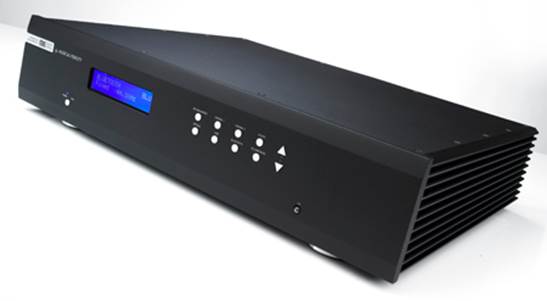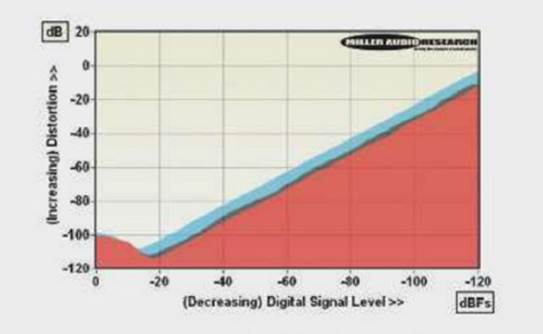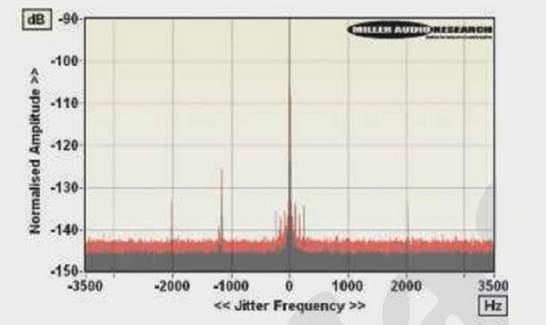Bluetooth’s Magic
Although the M6 DAC is Musical Fidelity’s
first Bluetooth product, the company has been importing FoxL’s Bluetooth
portable audio for a while now. As Antony Michaelson say, ‘Technically, there’s
no connection between that and what we’re going, except that I found using the
FoxL thing magical from a Bluetooth perspective. Generally speaking, Bluetooth
isn’t nearly good enough for audiophile-type applications, but we’ve addressed
that. We take the I2S bus out of the Bluetooth module straight into the
upsampling chip, avoiding all the front-end and normal interface electronics.
‘Of course, you can still get better
performance from the coaxial input, but the performance you get from Bluetooth
is amazing, and it’s a seamless experience because it’s effectively like
network streaming, but without the whole network computing thing. It works so
well. And you haven’t made any significant compromise with audio quality. It’s
not ultimately as good as you can have under ideal circumstances. But it is
damned good!’

Although
the M6 DAC is Musical Fidelity’s first Bluetooth product, the company has been
importing FoxL’s Bluetooth portable audio for a while now.
With the 1957 jazz classic Art Pepper Meets
The Rhythm Section (Contemporary 0025218633826) the M6 via USB really managed
to convey the gripping, cliff-hanging quality of the alto sexist’s solos,
flashes of genius shining through. Then I put on Eric Bibb’s Get On Board
(Telarc CD-83675) and wallowed in those lovingly-crafted instrumental textures
that Bibb creates with his cunning accompanists and brilliant soloists like Staffan
Astner with his wild slide-guitar on ‘Promised Land’.
So far, I’d gathered that the M6 was an
excellent performer with conventional 16-bit/44.1kHz material, whether using a
CD or ripped AIFF or WAV file as source, and while producing the expected good
results from the USB connection it behaved almost equally well with Bluetooth.
But although Bluetooth is a feature here, the ultimate purpose of the M6 must
be to cater for hi-res audio sources.
The real deal
Moving on to 24-bit/192kHz material, I
wasn’t disappointed. On an excerpt from a master recording of Rachmaninov’s
Symphonic Dances, kindly loaned by Tony Failkner, the M6 clearly revealed the
hi-res benefits. There was a fabulous sense of space around the instruments, a
feeling of truly effortless dynamics, and a transparency that gave truth to
instrumental timbres, whether you focused on the beautifully layered string
sound or thrilled to the tingling realism of the brass.
All this was available through the hi-res
USB connection, but of course switching to the Bluetooth imposes a limit of 48
kHz sampling. And so, with my 192 kHz material, it was immediately possible to
hear what was lost when reverting to ‘normal’ resolution by down sampling.
There just wasn’t the same feeling of a spacious venue, with the left/right
stereo imagery seemingly rather fragmented by comparison and with little sense
of depth; the instruments simply weren’t presented with the same free and open
quality. The sound had gone from extraordinary to, well, very ordinary.

The
coaxial, one optical (S/ PDIF) and XLR (AES/ EBU) digital are joined by a USB
1.0/ 2.0 port. There are matching digital outputs plus both single-ended (RCA)
and balanced (XLR) audio outs. M-series IR remote completes the package
Finally, while concluding this review, I
listened to Radio 3 via the BBC Radio Player, with a lunchtime concert
presented in the BBC’s so-called ‘High Definition sound’. Entering the house on
the ADSL phone line, the internet stream was being transmitted from my wireless
router to my MacBook. From there, the AAC digital audio was being sent
wirelessly via Bluetooth and its codec to the Musical Fidelity M6, which
decoded the digits and fed the analogue signal faultlessly to my amplifier and
speakers.
As the somber yet gorgeous tones of
Puccini’s Chrysanthemums filled the room, I reflected that this was a strange
and rather complicated procedure just to receive a radio broadcast. But it was
still a great way to enjoy the music.
The verdict
With excellent performance at a less than
high-end price, the M6 DAC is great for hi-res, while for less critical
listening the convenience of Bluetooth will be appreciated by anyone who
carries music around in a portable device. If you just want to add Bluetooth to
an existing system, there are cheaper ways of doing so. But as a well
though-out and capable product to cater for every digital need, it’s a winner.
Sound quality: 8.2/10
Lab report
Musical fidelity M6
MF’s engineers are past masters at
extracting the best performance from any given chipset, and the M6 is no
exception to this rule. The analogue stage offers a full 4V balanced output
from a moderate 47ogm source impedance with a full A-wtd S/N ratio of 114.5dB
and >130dB stereo separation through bass and midrange. The XMOS silicone
and asynchronous drivers ensure there’s no difference here between USB or
S/PDIF inputs. Distortion is as low as 0.0009% through the midrange to 0.001%
at 20 kHz at this peak output, falling to a minimum of 0.0001% mid band at
-20dBFs. Linearity is good to  0.05dB over a 100dB dynamic range via S/PDIF and
0.05dB over a 100dB dynamic range via S/PDIF and  0.1dB via USB just as any digital jitter is supremely well
suppressed – just 10spec via S/PDIF and 15spec via US at all sample rates.
0.1dB via USB just as any digital jitter is supremely well
suppressed – just 10spec via S/PDIF and 15spec via US at all sample rates.

Distortion
vs. 24-bit/48kHz digital signal level over a 120DB dynamic range. S/PDIF input
(1 kHz, red) and USB input (1 kHz, black; 20 kHz, blue)
The M6 offers two digital filter modes, a
traditional high-order FIR type with a claimed -3dB point at 0.49Fs and a
‘slow’ roll-off type with -3dB at 0.45Fs. In practice there’s no appreciable
difference in frequency or time domain behavior between these modes with 44.1
kHz, 48kHz or 96kHz inputs. All 44.1/48 kHz inputs reach -0.06dB/20kHz and
-0.7dB/45kHz with 96 kHz media, regardless of filter setting and all impulse
responses show equal pre/post ringing. Nevertheless, with 192 kHz media there
is a difference, the standard ‘fast’ roll-off filter offering -5.06dB/90kHz,
the ‘slow’ roll-off filter a full -8.9dB/90kHz.

High
resolution jitter spectra comparing USB (red) and S/PDIF (black) inputs with
24-bit/48kHz data. Jitter is vanishingly low via all inputs
|
Specifications
§ Maximum
output level (Balanced): 3.98Vrms at 47ohm
§ wtd
S/N ratio (S/PDIF / USB): 114.5dB / 114.5dB
§ Distortion
(1 kHz, 0dBFs/ -30dBFs): 0.00089% / 0.000012%
§ Dist.
& Noise (20 kHz, 0dBFs/ 30dBFs): 0.0012% / 0.0019%
§ Freq.
resp. (20Hz-20 kHz/ 45kHz / 90kHz): +0.0dB to +0.1dB/ -0.7dB/ -5.1dB
§ Digital
jitter (48 kHz/ 96 kHz/ USB): 11spec / 10spec / 15 spec
§ Resolution
@ -100dB:  0.1dB 0.1dB
§ Power
consumption: 6W
§ Dimensions
(WHD): 440x102x380mm
|